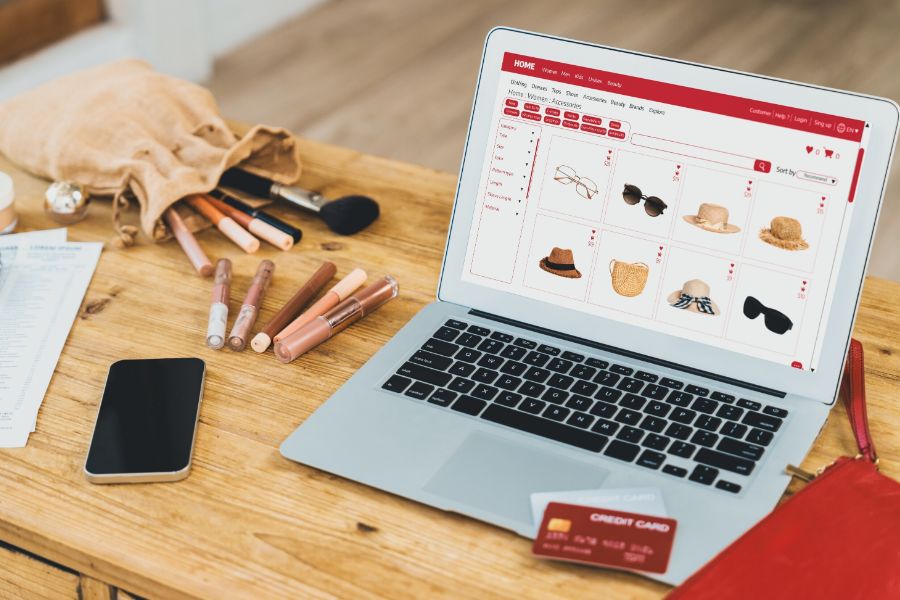In an era where sustainability and affordability drive consumer choices, op shops (short for “opportunity shops”) have emerged as more than just secondhand stores—they are pillars of community support and environmental responsibility. These thrift stores offer an extensive range of pre-loved items, from clothing and furniture to books and electronics, making quality goods accessible to everyone. However, beyond the bargains, op shops play a crucial role in funding charitable initiatives and fostering a culture of reuse.
For op shop owners and managers, efficiently handling transactions and inventory is key to maximizing impact and ensuring smooth operations. In this article, we’ll uncover what op shops are, their significance in modern retail, and essential POS and inventory management strategies that help these stores thrive.
What Is An Op Shop?
An “op shop” is a colloquial term primarily used in Australia and New Zealand to refer to what is more commonly known as a “thrift store” or “secondhand store” in other parts of the world. The term “op shop” is derived from “opportunity shop,” reflecting that these stores provide opportunities for people to purchase secondhand or used goods at affordable prices.
In 2022, the worldwide market worth of secondhand and resale clothing was approximated at 177 billion U.S. dollars. Projections indicate significant growth in the years ahead, with the market expected to nearly double in size by 2027, reaching an estimated value of 351 billion dollars.
These shops often sell a wide range of items, including clothing, accessories, furniture, books, electronics, and household items, which have been donated by individuals or sourced from various sources.
Charitable organizations or non-profit groups typically run op shops, and the proceeds from the sales are often used to support various charitable causes or community initiatives. Shoppers frequent op shops for various reasons, including finding unique and budget-friendly items, reducing waste by buying secondhand, and supporting charitable efforts.
In summary, an “op shop” is a term used in Australia and New Zealand for a thrift store or secondhand store where people can purchase used items, and the proceeds often go toward charitable causes.
What Can The Op Shop Offer?
What the Op Shop offers can vary depending on the specific store and its inventory, but here are some common items you can find in op shops:
- Clothing and Accessories: These shops often have a diverse selection of secondhand clothing, including shirts, pants, dresses, jackets, and shoes. You can also find accessories like hats, scarves, belts, and handbags.
- Furniture: Some op shops sell used furniture items such as sofas, chairs, tables, dressers, and bookshelves. These items can be a cost-effective way to furnish your home.
- Household Items: You can find a variety of household items, including kitchenware (e.g., dishes, pots, pans), small appliances (e.g., toasters, blenders), bedding (e.g., sheets, blankets), and home decor.
- Electronics: Some op shops may offer used electronics such as TVs, DVD players, stereos, and small kitchen appliances like microwaves and coffee makers.
- Toys and Games: Families often donate toys, board games, and puzzles to op shops, making them good places to find affordable items for children.
- Vintage and Collectible Items: These shops can be treasure troves for collectors and vintage enthusiasts. You may find antique furniture, collectible figurines, vintage clothing, and more.
- Sporting Goods: Some op shops carry sporting equipment like bicycles, golf clubs, tennis rackets, and exercise gear.
- Art and Craft Supplies: If you’re into arts and crafts, you might discover art supplies like paints, brushes, yarn, and fabric in op shops.
- Seasonal Items: These shops often feature seasonal items, such as holiday decorations, gardening tools, and outdoor furniture during the appropriate times of the year.
- Jewelry: You can sometimes find secondhand jewelry, including rings, necklaces, bracelets, and earrings.
- Appliances: Larger appliances like refrigerators and washing machines are less common but can occasionally be found in these shops.
It’s important to note that the selection and quality of items can vary from one op shop to another. Prices are generally lower than buying new items, making these shops a budget-friendly option for those looking to save money, reduce waste, or support charitable causes through their purchases. Additionally, shopping at op shops can be an eco-friendly choice, as it promotes recycling and reduces the demand for new products.
Setting Up An Opportunity Shop
Setting up an opportunity shop can be a rewarding endeavor that not only provides affordable goods to your community but also supports charitable causes. Here are the initial steps to assist you in commencing your journey:
Step 1: Definition of Your Purpose and Mission
Before you dive into the practical aspects of setting up your shop, clarify your purpose and mission. Decide whether your op shop will primarily serve as a means to raise funds for a specific charity or community project or if it aims to provide affordable goods to the community. Having a clear mission will guide your decisions and attract like-minded supporters.
Step 2: Market Research and Location
Conduct thorough market research to assess the demand for a thrift store in your area. Identify potential competitors and understand your target market’s preferences. Once you have a better understanding, find a suitable location. Look for a place that is easily accessible, with good foot traffic, parking options, and proximity to public transportation.
Step 3: Legal Requirements and Registration
This may involve registering your shop as a non-profit organization if that’s your chosen structure. Contact local authorities to determine the permits and licenses necessary to operate your store legally.
Step 4: Financial Planning and Funding
Create a comprehensive budget that covers startup costs, ongoing expenses, and expected revenue. Identify potential funding sources, such as donations, grants, or loans, to cover your initial expenses. Sound financial planning is crucial for the sustainability of your shop.
Step 5: Store Setup and Design
Prepare the physical space for your op shop by renovating and decorating it to create an inviting and welcoming atmosphere. Invest in shelving and displays to organize and showcase your items effectively.
Step 6: Sourcing Inventory
Begin collecting inventory by soliciting donations from individuals and local businesses. Make the donation process convenient by setting up donation bins or arranging pick-up services. Implement a system for sorting, cleaning, and pricing items, ensuring that your prices are competitive and reflective of the items’ condition.
Step 7: Staffing and Volunteers
Consider whether you need to hire staff to manage the shop, handle sales, and assist customers. Additionally, recruit volunteers who can help with tasks like sorting donations, operating the cash register, and maintaining the store. Volunteers are often passionate advocates for your cause.
Step 8: Marketing and Promotion
Develop a marketing plan that includes strategies for promoting your op shop. Use social media, local advertising, and community events to raise awareness. Consider partnering with charities or local organizations to expand your reach and support.
Step 9: Operations and Management
Determine your shop’s operating hours and establish efficient inventory management systems to track sales and restocking needs. Provide training for staff and volunteers to deliver excellent customer service, ensuring a positive shopping experience.
Step 10: Grand Opening
Plan a grand opening event to generate excitement around your shop’s launch. Consider offering special promotions or hosting community events to attract customers and supporters.
Step 11: Monitor and Adapt
Regularly evaluate your shop’s performance, gather customer feedback, and adapt your strategies as needed. Be open to making improvements and adjustments to better serve your community and achieve your mission.
Step 12: Community Engagement
Engage with the community through events, workshops, or outreach programs to strengthen your op shop’s ties with the local area. Building a sense of community around your shop can lead to increased support and long-term success.
Op Shop Management
Operating an opportunity shop involves managing various aspects of the business to provide quality service to customers while supporting your charitable mission. Two critical components of op shop management are handling transactions effectively and efficiently managing inventory.
How To Manage Op Shop Transactions?
Efficient transaction management is essential to provide a seamless shopping experience for customers and maintain accurate records of sales. Here’s how to effectively manage op shop transactions:
- Point-of-Sale System (POS): Invest in a reliable POS system that simplifies the checkout process. A good POS system allows you to scan items, calculate totals, and process various payment methods, including cash, credit cards, and contactless payments.
- Staff Training: Ensure that all staff and volunteers are trained to use the POS system proficiently. They should know how to process sales, apply discounts, handle returns, and provide exceptional customer service.
- Pricing and Tagging: Price items clearly with easy-to-read price tags or labels. Consider categorizing items by price ranges and using color coding to indicate discounts or sale items for your op shop.
- Customer Service: Deliver excellent customer service by training staff to assist customers, answer questions, and resolve issues promptly. A positive shopping experience encourages repeat business and word-of-mouth referrals.
- Returns and Refunds: Establish a clear and fair return policy, including time limits and conditions for returns or exchanges. Display the policy prominently at the checkout area and ensure that staff can explain it to customers.
- Sales Records: Maintain thorough records of daily sales of your op shop, including details on the types of items sold, sales totals, and payment methods used. These records are valuable for financial tracking and decision-making.
How To Manage Op Shop Inventory?
Effectively managing your op shop’s inventory ensures you have a well-organized and appealing selection of items for your customers. Here are the key steps for inventory management:
- Inventory Tracking: Implement a robust inventory tracking system for your op shop. Assign unique identifiers like SKUs(stock-keeping units) or barcodes to each item for easy tracking. Digital inventory management software can streamline this process.
- Regular Stock Counts: Conduct regular stock counts to reconcile physical stock levels with your records. This practice helps identify discrepancies, prevent theft or loss, and maintain accurate inventory data.
- Categorization and Organization: Organize items by category to make it easy for customers to find what they’re looking for. Use clear signage or labels for different sections such as clothing, furniture, electronics, and accessories.
- Pricing and Discounts: Research market prices to ensure your items are competitively priced. Consider offering discounts for items that have been in stock for an extended period or for seasonal promotions.
- Rotation and Seasonal Displays: Keep your op shop fresh and engaging by regularly updating displays and featuring different items based on seasons or holidays. This encourages repeat visits and increases sales.
- Donation Sorting: Develop an efficient system for sorting and processing incoming donations promptly. Determine which items are suitable for sale and responsibly dispose of damaged or unsellable items through recycling or donations to other charitable organizations.
- Online Sales (Optional): If applicable, explore online platforms to sell select items. This can expand your customer reach and increase revenue potential for your op shop. Many younger generations prefer to purchase second-hand clothing through smartphone apps, which offer them more choices and convenience. In December 2022, Depop recorded 354,000 monthly downloads worldwide, although this number was notably lower than in 2020. Nevertheless, thrift shops remain a popular choice for buying second-hand clothes.
- Supplier Relationships: Maintain positive relationships with suppliers, whether they are local businesses or donors. Nurturing these relationships ensures a steady supply of inventory for your shop.
- Sustainability and Recycling: Promote sustainability by encouraging responsible disposal of unsellable items. Consider recycling or donating items to other charitable organizations to minimize waste.
Effective management of transactions and inventory is crucial for the success of your op shop. Regularly review and refine your procedures and systems to identify areas for improvement and ensure your shop operates efficiently while fulfilling its charitable mission.
Conclusion
Op shop plays a vital role in our communities, offering budget-friendly shopping options and contributing to meaningful causes. Managing op shop transactions and inventory is essential to ensuring their success. By implementing efficient systems, delivering exceptional customer service, and maintaining organized and well-curated stock, op shop can continue to serve their dual purpose: providing affordable goods to the community while supporting charitable missions that make a positive impact on society. If you want to know more about this information, feel free to contact us.



